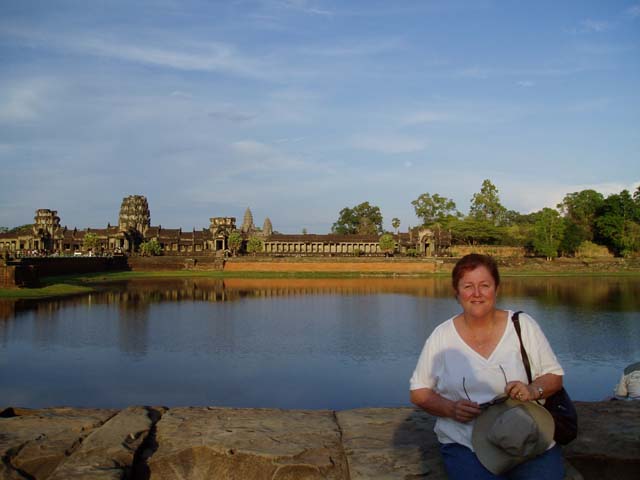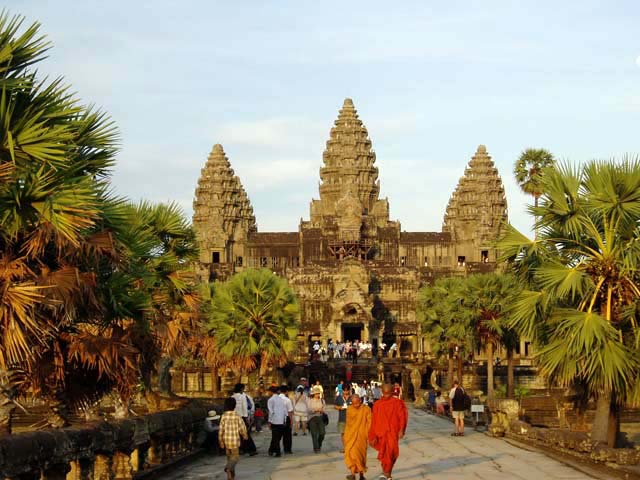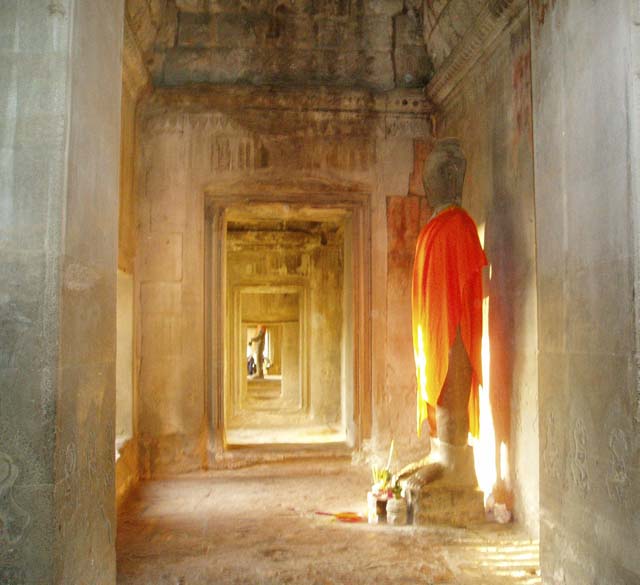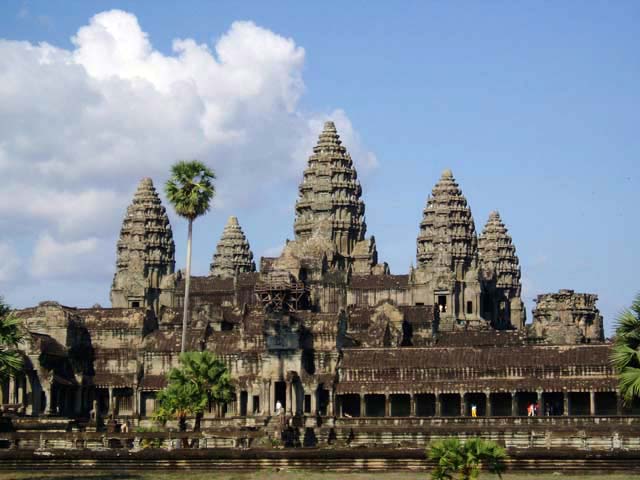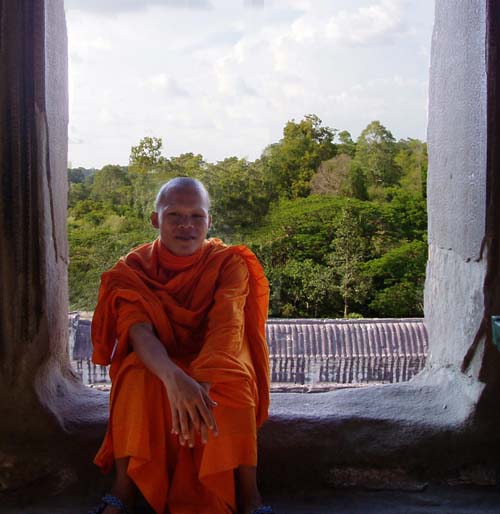|
|
|||
 |
Angkor |
||
|
Monday, May 3 (cont.), Phnom Penh Today is a public holiday in Cambodia, to celebrate the start of the Wet Season (and perhaps encourage it to arrive). Maybe it’s on the way – I hear a thunderstorm rumbling around as I write this, cramped at a little table in a coffee shop at Phnom Penh airport. We’re waiting for our 50-minute flight to Siem Reap in Cambodia’s north-west, the town near the ruins of Angkor. I hope the storm is over before we take to the air, because I am not a good air passenger at the best of times. (a few hours later) Angkor Wat and the temples…. Awesome, amazing - all those words the travel writers have poured out over the years understate the impact of these ruins. I can’t begin to describe the huge scale of the Angkor temples adequately, but some pictures might give some idea of what was waiting for us. We hadn’t planned to go out to Angkor Wat so soon after our arrival this afternoon. But Kim Savannah, our tuk tuk driver, hired on the recommendation of one of David’s colleagues and who met us at the airport, thought it would not be too tiring to make the trip this afternoon. Angkor Wat is surprisingly accessible. It’s only five kilometres outside Siem Reap, a smallish town now booming on tourism, with some mega palaces being built to accommodate sightseers. We were a little unprepared when we went bowling up to a T-junction after traveling from the town for only 10 minutes or so, to see a long stone wall on the other side of a river. This can’t be Angkor, I thought – but it was, as I realized when we rounded another corner to see the full glory of the temple in the late afternoon light.
What I assumed was a river was the moat (below) surrounding the temple complex.
(I twigged it wasn’t a river when I saw its successive 90◦ bends around the wall!). I know so little about the Angkor civilization, but what I have read and been told is that water was very important to it, obviously for practical reasons, but cultural and ritualistic ones as well. So many of the temples have moats which would put those around English castles to shame. By comparison, European ones are just little ditches, while the Cambodian version is more like a river or a lake We went just a little over-the-top with taking photos of Angkor Wat, as if we feared the temple, which has lasted nearly a thousand years, would disappear tomorrow... |
|||
|
|
|||
|
|
|||
|
|
|||
|
This photo, taken from inside Angkor Wat, shows how the jungle presses up against the outer walls of the temple - and explains how the temple was hidden for hundreds of years |
|||
|
Wednesday, May 5 Geoff’s birthday Today, we were up at 4.30am in the hope of seeing the sun rise over Angkor Wat. Alas, the weather is something not even the most diligent guide can control, so the early morning trip out to the temples failed to produce the hoped-for ball of fire coming over the majestic towers. Cloud obscured it all, to the disappointment of the large waiting contingent of tourist photographers, some of whom had very sophisticated camera gear – Nikons, Hasselblads etc… Still, the clouds were perverse and blocked the sun until after the early morning magic had disappeared.
(left) DB captured this shot of a young monk inside Angkor Wat. It also shows the threatening closeness of the jungle
|
|||
